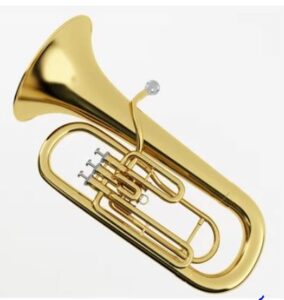In the vibrant tapestry of musical instruments, few hold the power to captivate and energize like the Conga drums. Originating from Afro-Cuban traditions, these drums have evolved into a global symbol of rhythm, culture, and connection. In this blog post, we embark on a journey to uncover the rich history, rhythmic intricacies, and cultural significance of Conga drums.
https://swarlayasamagam.com/go/conga_drum
The roots of Conga drums trace back to West Africa, where drumming played a central role in communal rituals and celebrations. Through the transatlantic slave trade, these rhythms found their way to the Caribbean, particularly Cuba, where they merged with indigenous influences to form what we now know as Afro-Cuban music.
Conga drums, also known as tumbadoras, gained prominence in the early 20th century, becoming integral to genres like rumba, mambo, and salsa. They were traditionally made from hollowed-out tree trunks with animal skin heads, producing a deep, resonant sound that echoed across dance halls and streets alike.
What sets Conga drums apart is their rhythmic complexity and versatility. Consisting of a set of drums of varying sizes, each with its own distinct pitch, Congas allow for intricate polyrhythms and improvisation. The primary drums include the tumba (largest and lowest-pitched), the conga (medium-sized), and the quinto (smallest and highest-pitched).
The rhythms produced by Conga drums are deeply rooted in African tradition, characterized by syncopation, call-and-response patterns, and improvisation. Players use a combination of hands, fingers, and palms to produce a wide range of tones, from deep bass to crisp slaps, creating a dynamic and captivating sound that drives the music forward.
Beyond their musical prowess, Conga drums hold immense cultural significance. They serve as a symbol of cultural identity, resilience, and solidarity within Afro-Cuban communities and beyond. From religious ceremonies to secular festivities, Conga drums provide the heartbeat of celebrations, uniting people in dance, song, and spirit.
Moreover, Conga drums have transcended geographical boundaries, influencing diverse musical genres and cultures worldwide. From Latin jazz to pop and beyond, their infectious rhythms infuse energy and vitality into countless musical compositions, showcasing the universal appeal of rhythm and percussion.
In a world filled with noise and chaos, Conga drums offer a rhythmic sanctuary—a place where people come together to celebrate, connect, and express themselves through the universal language of music. As we delve into the enchanting world of Conga drums, we discover not just an instrument but a living embodiment of cultural heritage, creativity, and human connection. So, the next time you hear the irresistible beat of Conga drums, let yourself be swept away on a rhythmic journey that transcends time and space.
One of the most fascinating aspects of Conga drums is their ability to adapt and evolve within different cultural contexts. As Afro-Cuban music spread throughout the Americas and beyond, it encountered diverse musical traditions, leading to a rich tapestry of fusion and innovation.
In the United States, Conga drums played a pivotal role in the development of Latin jazz, a genre that emerged from the fusion of Afro-Cuban rhythms with American jazz sensibilities. Legendary musicians like Dizzy Gillespie, Tito Puente, and Machito incorporated Conga drums into their compositions, blending complex rhythms with improvisational jazz solos to create a new and electrifying sound.
Furthermore, Conga drums have found their way into contemporary popular music, enriching genres ranging from funk and hip-hop to electronic dance music. Artists like Carlos Santana, Sheila E., and Manu Chao have all integrated Conga rhythms into their music, infusing their songs with infectious energy and groove.
Beyond their musical contributions, Conga drums hold a deep social and spiritual significance within Afro-Cuban culture. In religious practices such as Santería and Palo, drumming serves as a form of communication with spiritual entities, channeling divine energy and guiding rituals of healing, protection, and worship.
In secular settings, Conga drums serve as a catalyst for social cohesion and celebration. Whether at carnivals, street festivals, or community gatherings, the infectious rhythms of Congas bring people together, transcending barriers of language, nationality, and background. Through dance and music, individuals forge connections, express joy, and affirm their shared humanity.
In addition to their cultural and social impact, Conga drums offer numerous educational and therapeutic benefits. Learning to play Congas fosters discipline, coordination, and creative expression, making them an ideal instrument for music education programs in schools and community centers.
Moreover, drumming has been recognized for its therapeutic effects on physical and mental well-being. Studies have shown that drumming can reduce stress, improve mood, and enhance cognitive function, making it a valuable tool for music therapy interventions targeting individuals with anxiety, depression, and trauma-related disorders.
In conclusion, Conga drums stand as more than just musical instruments—they are vessels of culture, history, and community. From their roots in West Africa to their global influence in contemporary music, Conga drums continue to inspire and connect people across generations and continents. So, the next time you hear the rhythmic pulse of Congas, take a moment to appreciate the profound legacy and enduring power of these iconic drums.




